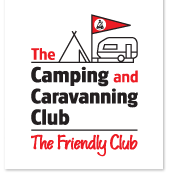Who we are
This web site is owned and controlled by Towsafe Ltd (referred to as "us","our" or "we" in these terms). We are a limited company registered in England and Wales with number 8537067. Towsafe is a trading division of Towsafe Ltd.
Our e-mail address for you to contact us is support@towsafe.co.uk.
Terms of use & your agreement
This agreement is between us and the visitor to our web site (referred to as "you" or "your" in these terms).
You may use this web site providing you agree to these Terms of Use. If you do not agree to these Terms of Use, you must not use this web site. If you use the web site, you will be deemed to have accepted these terms.
We reserve the right to change these Terms of Use by posting any changes on the web site. The new terms will be effective immediately they are posted.
Use of material
We recognise that when you obtain access to this web site, your computer downloads a copy of the material on this web site. By obtaining access to the web site, you agree that you will use the material for your personal use only, and will not use the material for any commercial purpose.
Copyright
& other rights
Except where expressly acknowledged on this web site, the contents of
the web pages of this web site are © Towsafe 2013, and we are the proprietor
of all other intellectual property rights in them.
All Towsafe trade marks, names, and logos are our proprietary marks or those of our associated companies. Marks identifying third parties are owned or licensed by those third parties or their associated companies. Nothing in these Conditions of Use in any way confers on you any licence or right under any of our trade marks, names or logos or those of any third party, and any unauthorised use may lead to infringement action being taken.
Prohibited acts
In consideration of us agreeing to permit you to access this web site, you agree that you will not copy, reproduce, redistribute, download, republish, transmit, display, adapt, alter, create derivative works from or otherwise extract or re-utilise any material appearing on this web site except where specific facilities are provided for this purpose.
Without prejudice to the generality of the forgoing paragraph, you also agree that you will not use this web site:
· for the posting, uploading, emailing or other transmission of any material, the publication, dissemination, use or possession of which infringes the rights of any third party;
· in any way which is abusive, defamatory or obscene or which will harass, distress, or inconvenience any person or which might restrict or inhibit the use and enjoyment of this web site by any person;
· for the posting, uploading, emailing or other transmission of any unsolicited or unauthorised advertising, promotional materials, "junk mail", "spam", "chain letters", "pyramid schemes" or any other form of solicitation or commercial exploitation;
· for the posting, uploading, emailing or other transmission of any material that contains software viruses or any other computer code, files or programs designed to interrupt, disrupt, restrict, destroy, limit the functionality of or compromise the integrity of any computer software or hardware or telecommunications equipment;
· to create a database (electronic or otherwise) that includes material downloaded or otherwise obtained from this web site;
· to transmit or re-circulate any material obtained from this web site to any third party;
· in any way that might bring us or our name into disrepute.
Disclaimer & exclusion of liability
Nothing on this web site shall constitute an offer by us to supply goods or services to you.
Our web site is provided "as is" and we do not give any warranty, condition, guarantee or representation, express or implied, about the operation of this web site or the accuracy, completeness or non-infringement of any information, content, materials or graphics on this web site or to any web site to which it is linked (or that any of the foregoing will be up-to-date). You expressly agree that your use of this web site is at your own risk.
To the fullest extent permitted by law, we disclaim all warranties, express or implied, including but not limited to implied warranties of merchantability and fitness for a particular purpose.
Further, we do not warrant that this web site will be available without interruption, or that it is free of errors, or that the web site and the server are free of computer viruses, bugs or other harmful applications.
Links to third party sites & framing
We may, from time to time, let you leave the site to linked sites. Except for any linked sites which are operated by us, such linked sites are not under our control, and accordingly we explicitly state that we will not be responsible for the contents of any linked site. The links are provided for your convenience and any such link does not imply endorsement by us of the site or of any association with the operators of the site.
You may only create a hypertext link to this web site from another web site with our written permission. Where such permission is granted, it is subject to the conditions that the hypertext link is to the home page of this web site, and it must be expressly stated in the hypertext link that the link is to the Towsafe web site. To obtain permission, please submit details of your web site and request by e-mail to support@towsafe.co.uk. We reserve the right to withdraw any permission given by notice in writing to you, in which case you must remove the hypertext link without delay.
You are not permitted to frame any pages of or content on this web site without our prior written consent.
Limitation of liability
We will not be liable to you, except in respect of personal injury to or death of any person (for which no limit applies within the jurisdiction of England and Wales) regardless of the form of action, whether in contract, tort (including negligence and breach of statutory duty), strict liability, or otherwise whatsoever, for any loss of profit, business, contracts, or revenues, or for any special, indirect or consequential damage of any nature whatsoever arising directly or indirectly out of your use of this web site.
If you enter this web site, you agree that this clause relating to limitation of liability is reasonable, and it reflects the nature of a web site.
Nothing in these Terms of Use is intended to affect nor will it affect your statutory rights if you are a consumer.
Your materials
We may publish any material you submit, post, upload, email or otherwise transmit to them or to this web site at our sole discretion and we shall be entitled to make additions or deletions to any such material prior to publication.
You hereby grant us a non-exclusive, royalty-free, perpetual and world-wide licence to republish any material you submit, post, upload, email or otherwise transmit to them or to this web site in any format, including without limitation print and electronic format.
You hereby waive all of the moral rights that you have under Chapter IV of the of the Copyright, Design and Patents Act 1988 in respect of any material you submit, post, upload, email or otherwise transmit to us or to this web site.
You confirm that you are at least 18 years of age, or, if under 18, that you are accessing the web site with full parental/guardian consent.
Removal of materials and cancellation of access
We shall have the right to refuse to allow you access to any of the pages on this web site at any time and for any reason without giving you any advance notice, and we will not be liable for any losses or damages whatsoever (other than losses or damages for death or physical injury arising out of our negligence or that of our employees) arising from your inability to access any of the pages on this web site.
We will have the right at any time and for any reason to remove from the pages on this web site any material posted, uploaded, emailed or otherwise transmitted by you without giving you any advance notice, and we will not be liable for any losses or damages whatsoever (other than losses or damages for death or physical injury arising out of our negligence or that of our employees) arising from the removal of such material.
Severance
If any term of these Terms of Use is held to be invalid, unlawful or unenforceable, it shall not affect the enforceability of any of the remaining terms.
Law
These Terms of Use shall be governed and construed in accordance with English law and shall be subject to the exclusive jurisdiction of the English courts.





